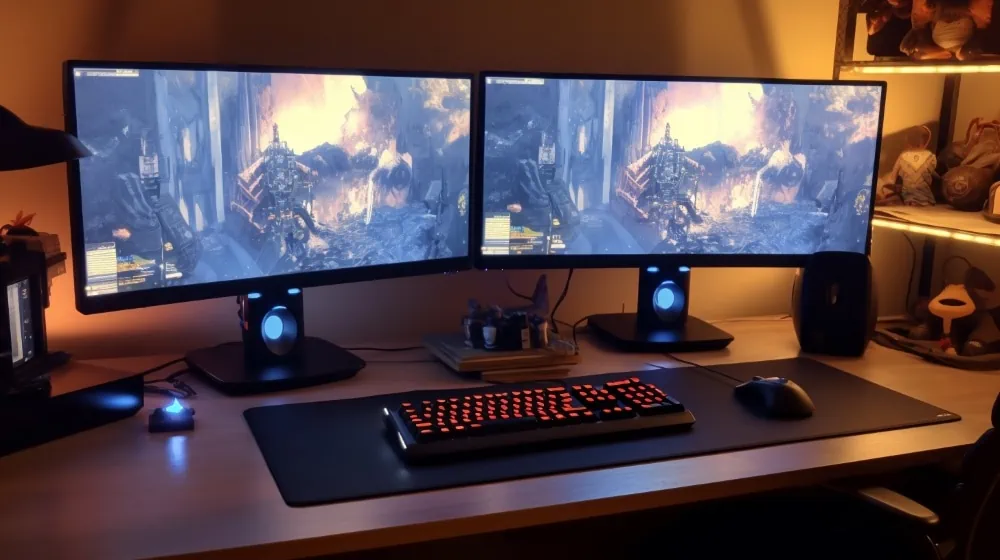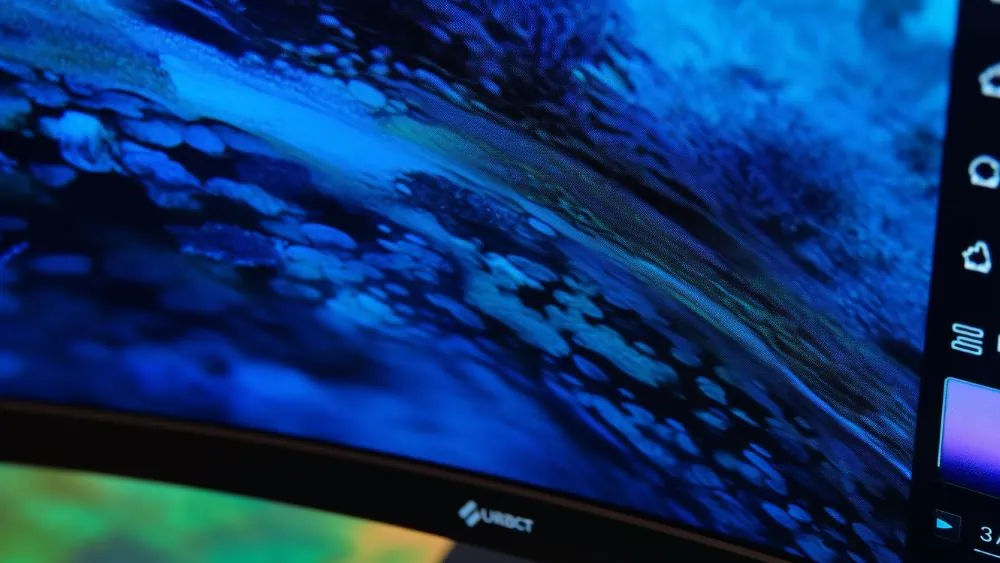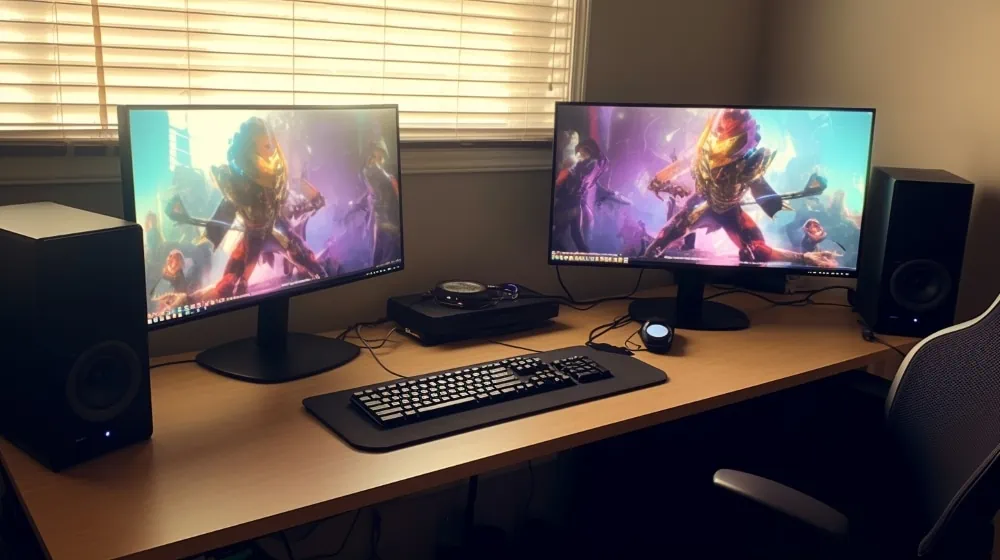If you’re wondering whether a dual monitor affects fps (frames per second), read through this article.

Does a dual monitor affect FPS? That question might be running through your mind if you’re considering expanding your gaming setup with a second screen. Then it’s time to prepare well and investigate things. Or have you already connected a second monitor, and have you noticed that your games run less smoothly?
Anyway, in this article, I’ll discuss the potential impact of a dual-monitor setup on FPS, what exactly FPS is, and why it’s important to gamers. You will also read about other factors that affect the FPS and possible solutions to maintain the optimal FPS. So, buckle up and let’s get started!
Key points summarized
- Dual monitors can affect FPS, but the impact is often minimal and depends on your hardware.
- Optimize your PC settings, choose the right monitor configuration and consider a more powerful graphics card to maintain optimal FPS with a dual monitor setup.
- A dual monitor can be a valuable addition to your gaming setup if you’re willing to invest in the right hardware and make adjustments.
What is FPS and why is it important for gamers?
FPS stands for frames per second , and is a measure of how often your monitor refreshes the image per second . The higher the FPS, the smoother and smoother movements appear on your screen, which is crucial for a good gaming experience.
A high FPS makes for a smooth, accurate gaming experience, which is especially important in fast-paced games, such as first-person shooters (strikingly, also abbreviated as ‘fps’). So it’s essential to know if your monitor is limiting your FPS and how it can affect the gaming experience!
Factors that affect FPS in gaming
The graphics card – also called video card – plays a major role in the FPS, because it is responsible for rendering the images on your screen. A more powerful graphics card delivers more FPS than a weaker one. 💪
The CPU – or processor – is also important: a fast processor helps to calculate game data and thus contributes to the FPS.
Other factors include your amount of RAM (in short: more is better), screen resolution, and game settings. To ensure the best performance, choosing the best gaming monitor is a must.

The impact of dual monitors on FPS
Dual monitors can put extra strain on the graphics card , as it now has to drive two displays instead of one. This can affect the FPS, especially if both screens have high resolutions.️️
Do you also play a game at the highest possible settings, do you have a YouTube video open on your second screen at 1440p resolution or higher, and also a moving wallpaper? Then you can probably guess that your video card has to make more effort to deliver a stable FPS output.
I speak from experience: I too have two monitors on my desk, and while playing triple-A games I have to disable apps like Wallpaper Engine to get rid of moving wallpapers, and close open YouTube videos or streams.
Particularly bad ports – such as Star Wars Jedi: Survivor – run completely crazy if the game is not the only thing that the video card pays attention to.
Still, dual monitors also yield positive results, such as more efficient window layout, easier multitasking, and increased productivity.
If you tap the best monitor for working from home to turn your set-up into a game-and-work hybrid, you’ll have a set-up in no time that gets the best out of you and vice versa.
Comparison of single and dual monitor gaming performance
Your PC’s performance may vary when using one monitor compared to two monitors. In some cases, using two monitors can lead to a slight drop in FPS in games. But don’t worry: the differences are often fairly minimal and depend on your hardware.️
If you have a powerful graphics card , such as an NVIDIA GeForce RTX 3080, you probably won’t experience a noticeable difference in FPS when using a dual monitor setup.
However, with a less powerful and/or older graphics card, such as the GTX 1080, the use of two monitors does affect the performance.
Tips for maintaining optimal FPS with two monitors
To get the best performance with a dual monitor setup, I have some tips for you to ensure a flying start!
1. Select the correct monitor configuration
The right monitor configuration makes a big difference to your gaming experience. Choose monitors with a higher resolution and refresh rate for the best image quality and smooth gameplay. For example, a 144Hz monitor or 4K monitor is a good choice.
Synchronization between your monitors is also important, especially if you plan to play games on both screens. Make sure the monitors have the same resolution and refresh rate to ensure a consistent gaming experience.

2. Optimize your PC’s settings
Adjusting game settings makes a big difference in the performance of your PC and monitor. For starters, turn down the graphics settings in your games to achieve a higher FPS, if your FPS has been disappointing so far. This may mean lowering the shadows, texture quality, or anti-aliasing.️
In addition, it is important to manage background processes and power settings to ensure that your PC performs optimally. Close unnecessary programs and apps to free up more system resources for your games. Also, don’t forget to keep your drivers and software up to date for best performance.
3. Use the correct connectors and cables
A good connection between your PC and your monitors is essential to get the most out of your dual monitor setup. Choosing the right connections and cables is therefore necessary.
For example, HDMI, DisplayPort and DVI are some examples of suitable connections for dual monitors, DVI being a somewhat outdated standard. DisplayPort is especially recommended for gaming, due to its higher bandwidth and support for higher resolutions and refresh rates.
The quality and length of your cables also affect performance. Choose high quality cables and make sure they are not too long to avoid signal loss.
In addition, pay attention to the standard of the cable – HDMI 2.1 is the last HDMI standard at the time of writing, and DisplayPort 2.0 and 2.1 among DisplayPort cables.
I advise you not to go below HDMI 2.0 and/or DisplayPort 1.4 in terms of standards. This way you can be sure that you not only have a good cable now, but that you can enjoy it at least as much in a few years.
Cable management is also important for keeping your setup neat and organized. Use cable ties or cable ducts to keep everything in place and prevent a mess of wires.
4. Consider a more powerful graphics card
Running a dual monitor setup puts extra strain on your graphics card. A powerful graphics card improves performance and thus minimizes FPS loss.
Some examples of graphics cards that perform well with dual monitors at the time of writing are the Nvidia GeForce RTX 30 series, and the AMD Radeon RX 6000 series.
Sure, there’s a cost to upgrading your graphics card, but if you’re serious about gaming and want to get the most out of your dual-monitor setup, it’s well worth the investment. Weigh the costs and benefits and determine what is best for your situation.
Common problems and solutions in dual monitor gaming
Gaming on a dual-monitor setup sometimes brings some issues, such as screen flickering, loss of performance and/or compatibility issues. Fortunately, there are solutions and tips to fix or avoid these problems.
An important aspect is compatibility. Make sure your monitors and graphics card work well together by choosing two with the same resolution and refresh rate, and ideally the same size. Also regularly update your drivers and software to keep everything running smoothly.
How to avoid picture flickering and other problems
Flickering and other visual problems are very annoying while gaming and can make all the difference in a competitive game – in the negative sense of the word. To avoid this, there are some tips you can follow:
- adjusting your monitor settings, such as brightness and contrast;
- the right cables, as discussed earlier, to ensure a stable connection between your PC and monitors;
- less ambitious game settings, or opt for a somewhat lower graphic quality in the game;
- make sure any synchronization techniques are enabled (G-Sync or FreeSync), and issues resolved (such as FreeSync ghosting);
- keeping your drivers and software up to date.

Is a dual monitor worth it for gamers?
A dual monitor setup offers both advantages and disadvantages for gamers. On the one hand, it can improve your gaming experience by providing a larger playing field and extra screen space for utilities.
On the other hand, it can affect your FPS and incur additional costs if you need to upgrade other hardware, such as your video card.
However, the impact on FPS varies depending on your specific configuration and the games you play. In general, the FPS loss with a well-optimized dual monitor setup is minimal.
So, is a dual monitor worth it for gamers? The answer is: it depends. If you weigh the pros against the cons and are willing to make the necessary adjustments, a dual monitor can certainly provide a great gaming experience. The choice is yours!️
Conclusion
There are different opinions about using a dual monitor setup for gaming and how it affects FPS. Depending on your hardware and your commitment to optimizing your PC settings, dual monitors can both provide a great gaming experience and potentially negatively impact your performance.
It all comes down to the balance between costs, benefits and your personal preference. If you take the information in this article to heart and are willing to invest in the right equipment and modifications, the answer to the question is already clear, right?
So: experiment, optimize and game them! And don’t forget to continue exploring our website for more interesting articles and tips on gaming and technology. Thanks for reading, and we look forward to hearing from you !